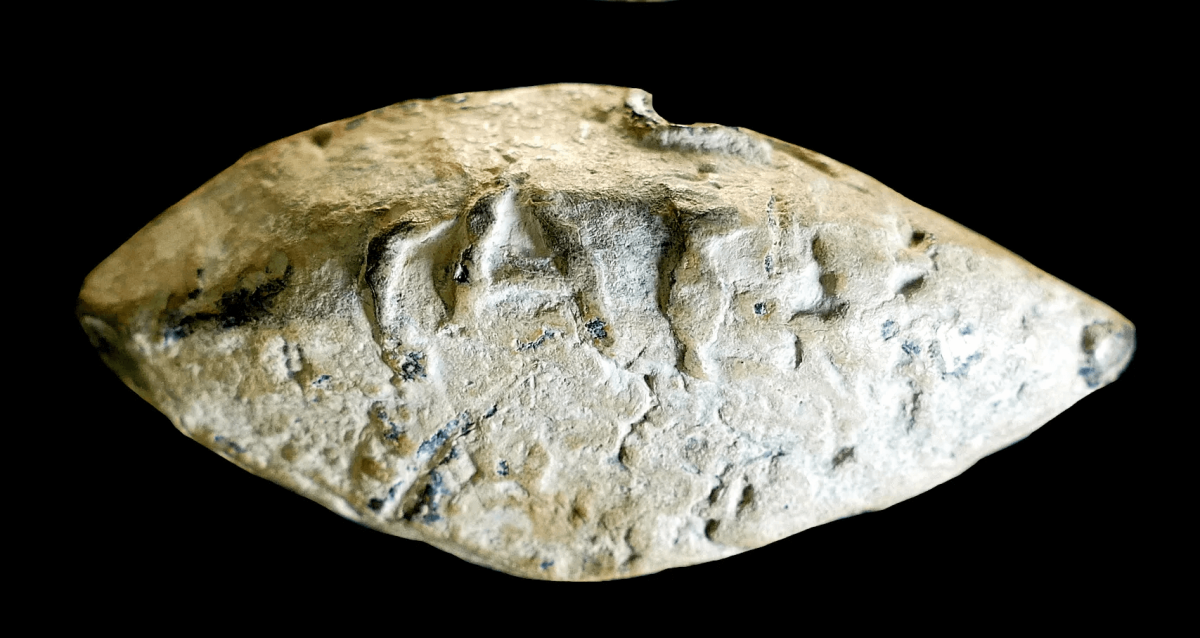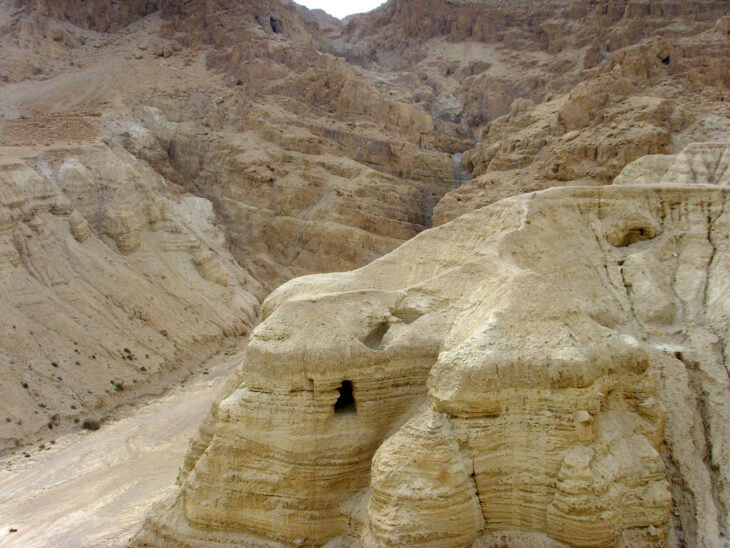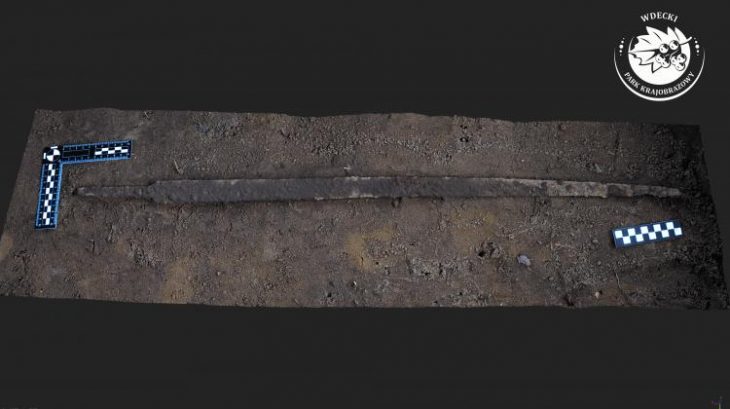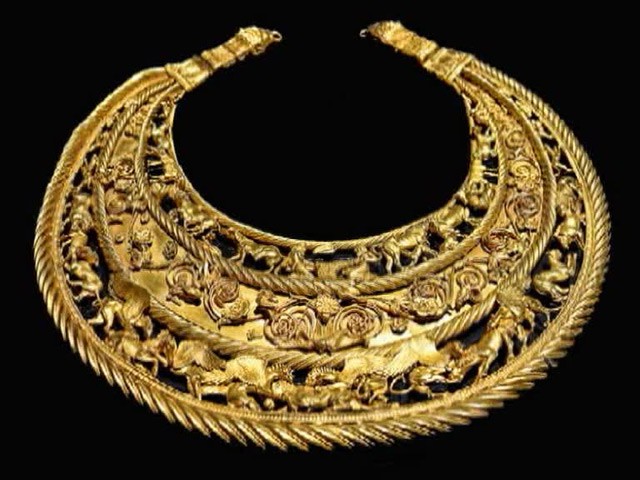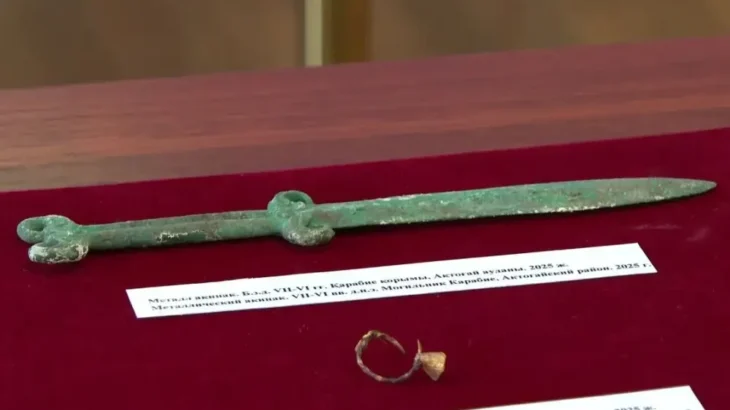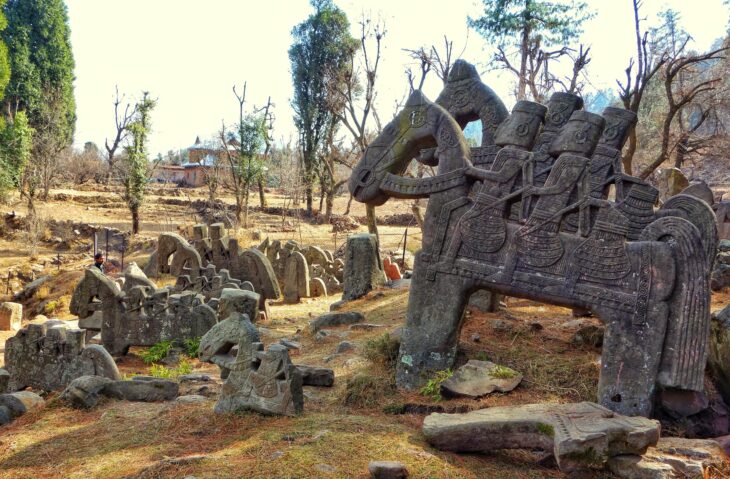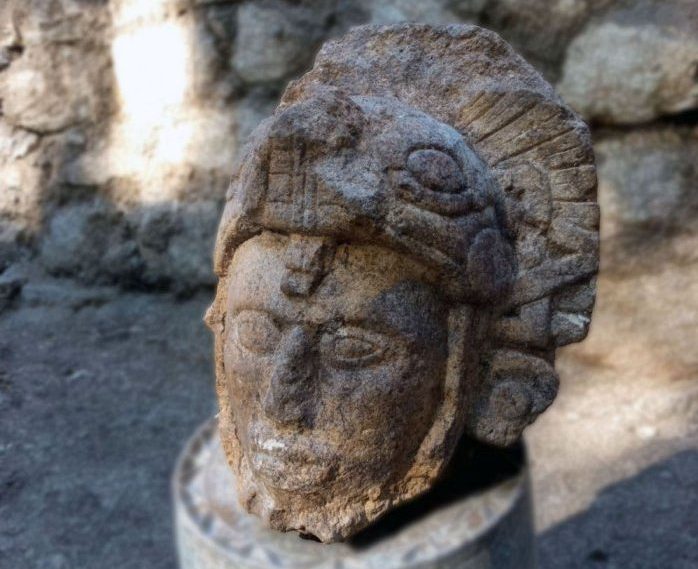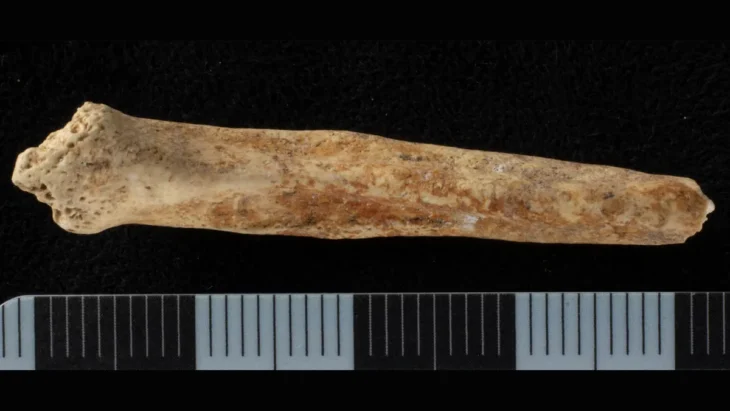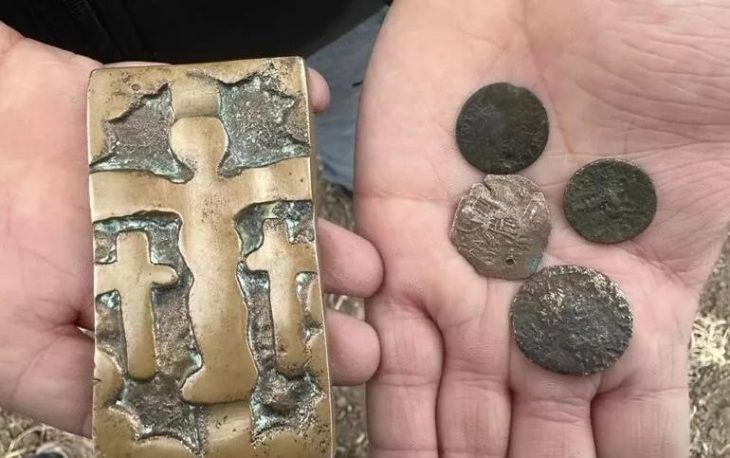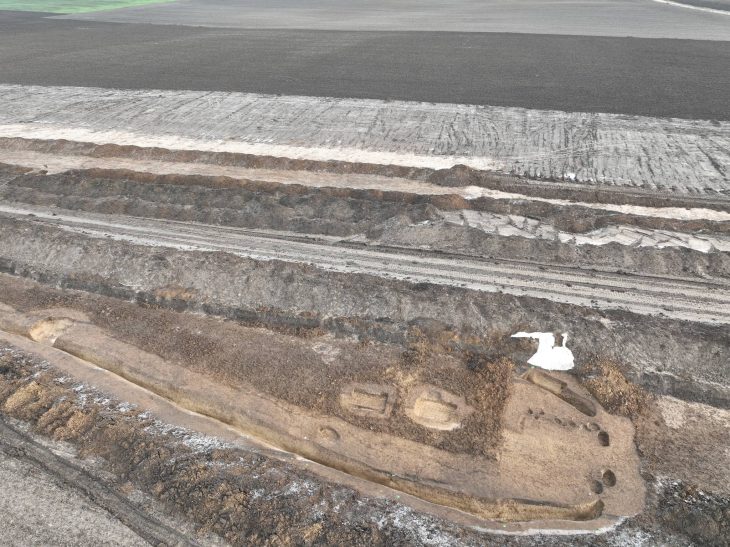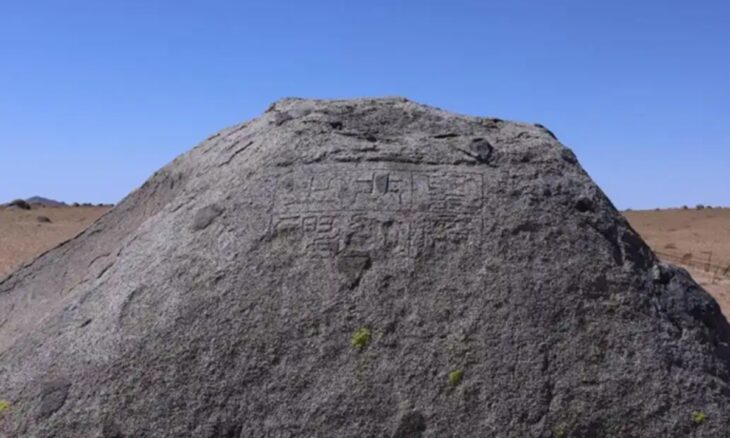A lead sling bullet inscribed with the name of Julius Caesar and the Ibero-Roman city Ipsca has been discovered in the countryside of Montilla, Andalusia, southern Spain.
It is the first time in the Iberian Peninsula that an incontrovertible inscription of Gaius Julius Caesar’s name abbreviated with CAES has been discovered on this type of projectile. It is also the first sling bullet inscribed with the place name Ipsca; in fact, it is the first toponym of any Roman Hispania city ever found inscribed on a sling bullet.
The discovery was possible thanks to the in-depth study of the projectile conducted by Javier Moralejo and Jesúss Robles of the Autonomous University of Madrid, together with Antonio Moreno of the Archaeological Museum of Cabra and José Antonio Morena of the Museo Histórico of Baena. Their work has now been published in the scientific journal Zephyrus of the University of Salamanca.
The lead sling bullet was found 19 kilometers from Baena, in the countryside of Montilla, a Spanish municipality of around 23 thousand inhabitants, located in the autonomous community of Andalusia. The town is located at an average height of 372 meters above sea level and 49 kilometers from Cordoba. The terrible final clash of the civil war probably took place in his campaigns – the battle of Munda – which brought Julius Caesar here against the sons of Pompey, in 45 BC.
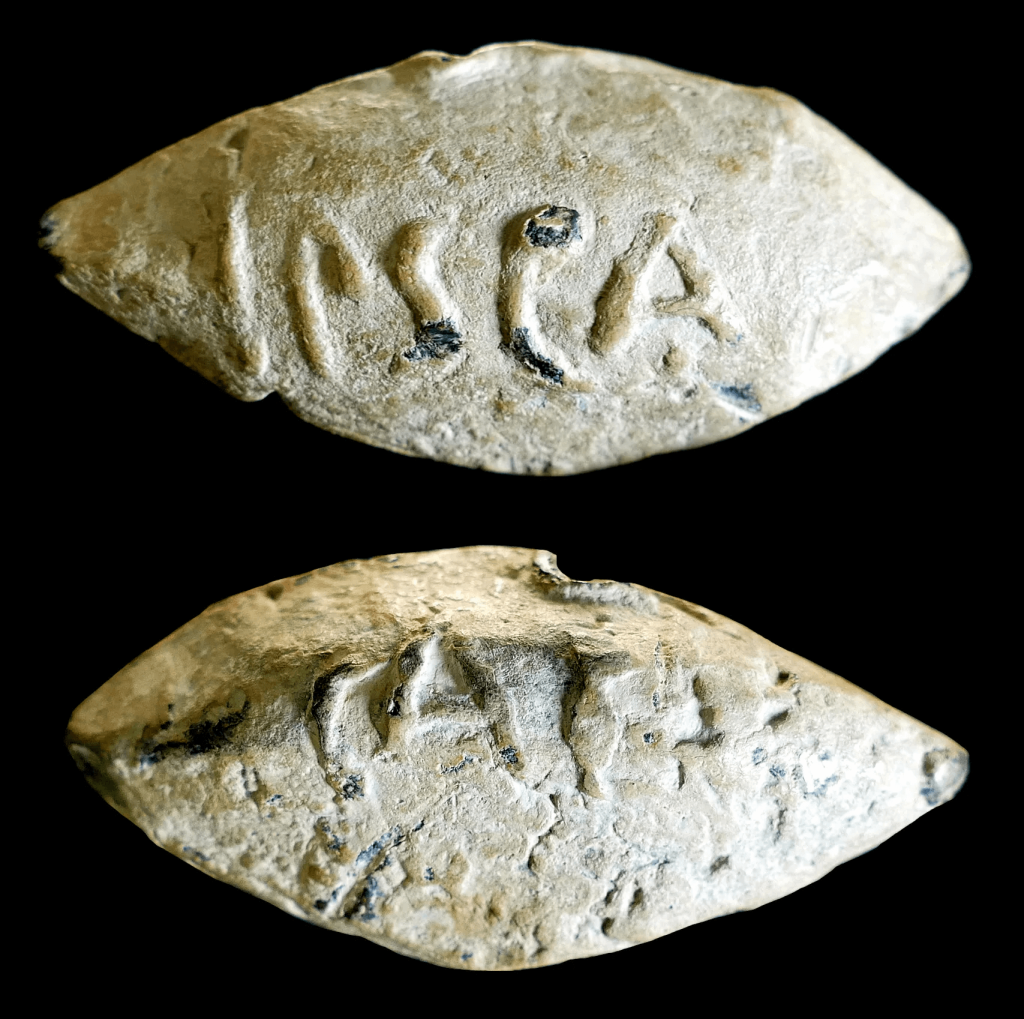
In 45 B.C., Julius Caesar and Pompey’s surviving sons, Gnaeus and Sextus Pompeius, fought the final battle of their civil war in the countryside. The exact location of the Battle of Munda has long been debated, with the Montilla area being one of the leading contenders. The discovery of the lead sling bullet supports this candidacy and confirms Ipsca’s alliance with Caesar’s faction.
📣 Our WhatsApp channel is now LIVE! Stay up-to-date with the latest news and updates, just click here to follow us on WhatsApp and never miss a thing!!
The bullet is shaped like an acorn, with pointed ends. It measures 4.5 centimeters long, 2 centimeters wide and 1.7 centimeters high. It weighs 71.1 grams. And it bears two inscriptions, in relief: IPSCA ve CAES.
Inscriptions on lead slingshot projectiles (glandes inscriptae) were first used in the 5th century B.C. Greece and continued through the early Roman imperial era. The clay molds used to manufacture the shots would be incised so the projectile, once hardened, would feature an inscription in relief on the body Inscriptions commonly included the maker’s name, the military commander, the legion, or the location where they were to be deployed.
Throughout history, the sling gained popularity as a weapon in Ancient Greece and the Roman era. The Roman Army even adopted slings for use by their skirmishers. A tiny hand-powered projectile weapon called a sling, which has a small cradle or pouch between two retention cords, fired the bullet.
Cover Photo: STILEarte

